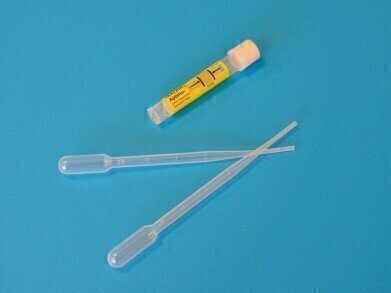Electrophoretic Separations
What is CE-MS?
Mar 26 2022
CE-MS is a popular hyphenated method for analytical chemistry. While many have heard of it, not everyone knows what it means and how it works. In this post, we’ll dig a little deeper into the technique and its applications.
CE-MS: the basics
CE-MS stands for capillary electrophoresis – mass spectrometry. It’s a coupling of the two named techniques to combine the advantages and produce better results.
Capillary electrophoresis is a separation method, which starts with a capillary (a small tube). Electrophoresis then separates molecules within that tube by size and charge. Molecules are pulled to either end of the capillary (the anode or cathode) by electricity to separate them by charge, with filters added for size too.
On the other hand, mass spectrometry measures the mass-to-charge ratio of each component. This can be used to identify unknown compounds by determining their molecular weight as well as quantifying known components and determining molecules’ structure and chemical properties.
Coupling the two together as CE-MS provides separation along with identification, quantification or both. The technique can be further broken down depending on how samples are loaded, with hydrodynamic injection and electrokinetic injection the two options.
Improvements in technology for both CE and MS instruments has further improved the technique over time, resulting in more sensitive analysis and accurate mass data, as discussed in the article ‘Capillary Electrophoresis coupling to Mass Spectrometry (CE-MS), an advanced technique orthogonal to LC-MS for high resolution separation and accurate molecule identification’.
How is CE-MS used?
Because of its sensitivity, efficiency and speed, CE-MS is used by researchers in a range of different fields. One application is the discovery of biomarkers for diseases. When analysing body fluids and tissues, the wide range of protein expression and complexity of samples make many standard techniques unsuitable. CE-MS has been used to determine urinary biomarkers which make disease diagnosis quicker.
Another common use is in metabolomics, which focuses on the analysis of compounds with low molecular weight in biological samples. CE-MS has been used to analyse compounds from a vast array of samples, including urine, plasma, cerebrospinal fluids, bacterial extracts and plant extracts.
It can also be used in food and drink testing, as shown in the analysis of beer samples by researchers from the University of Tübingen. They wanted to quantify glyphosate (N-(phosphonomethyl)glycine) and AMPA (aminomethylphosphonic acid), its degradation product. The team did so using CE-TOF-MS, which combines CE with time of flight mass spectrometry. They were able to quantify both the glyphosate and AMPA without the need for enrichment, purification or dilution of samples.
Digital Edition
Chromatography Today - Buyers' Guide 2022
October 2023
In This Edition Modern & Practical Applications - Accelerating ADC Development with Mass Spectrometry - Implementing High-Resolution Ion Mobility into Peptide Mapping Workflows Chromatogr...
View all digital editions
Events
ACS National Meeting - Fall 2024
Aug 18 2024 Denver, CO, USA
Sep 04 2024 Chiba, Tokyo, Japan
Sep 04 2024 University of Warwick, Coventry, UK
Sep 10 2024 Rockville, MD, USA
Plastics Recycling World Expo Europe
Sep 11 2024 Brussels, Belgium














